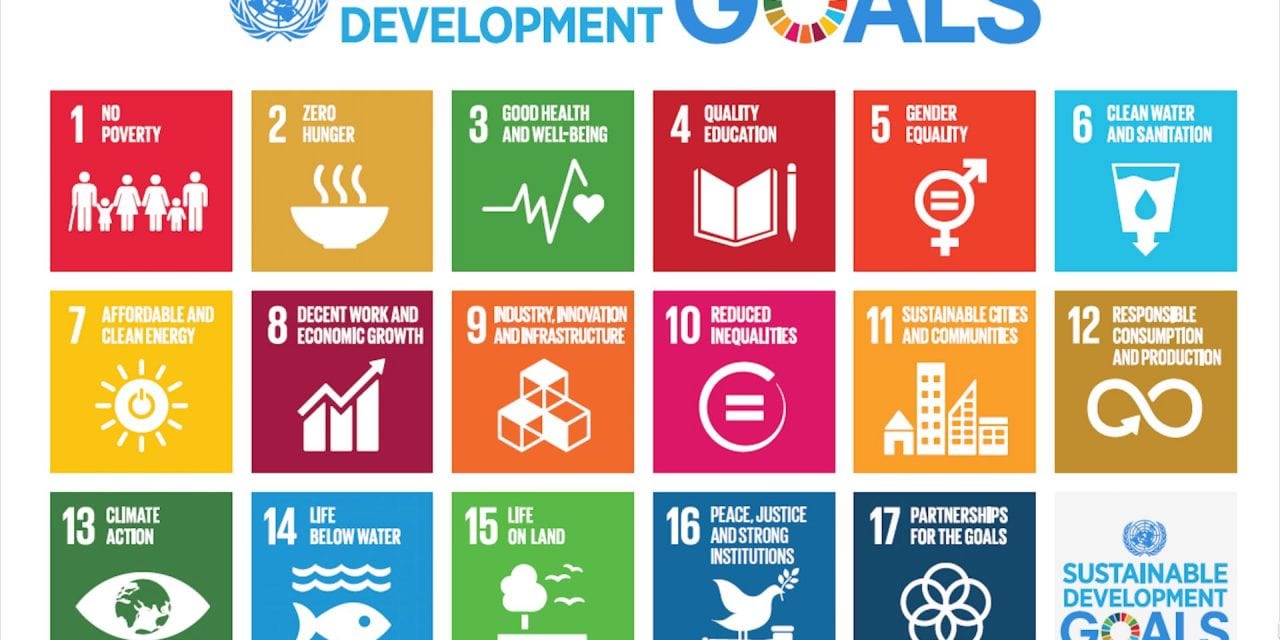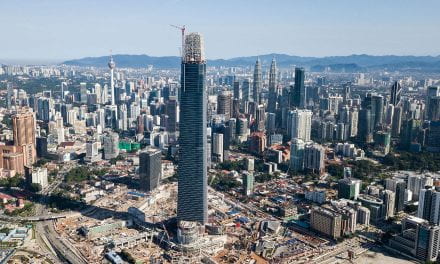By: Theron Abell*
In 2015, the United Nations Development Programme (UNDP) created a list of aspirations for the global community. Referred to as Sustainable Development Goals (SDGs) these seventeen targets are designed to be met by 2030. By examining a handful of SDGs, we can determine how well the world is progressing towards these goals. The passage of three years has allowed the world to make noticeable progress, but yet, there is still much to be done. In this blog, four goals regarding poverty, education, clean water and sanitation, and underwater life will be assessed through the world’s progress towards the SDGs.
- No Poverty
According to the UNDP in 2015, more than 800 million people survived on under $1.25 a day. Poverty deteriorates communities, and the cause of this damage can come from a variety of factors. Whether it be caused by the local political climate or environmental hazards, lack of funds to live a healthy life can affect anyone at any time. A recent press release update from the World Bank mentions that the number of people living on less than $1.90 a day fell by 68 million, and is now at 736 million, which represents an incredible step forward towards reachingt he UNDP’s goal of ending poverty. At this rate, approximately 264 million more people would be above this line.
- Quality Education
Providing access to education has the potential to transform the lives it is available to. Several states in the global community cannot provide its residents free public education, and the overall quality of life for the citizens is therefore not what it possibly could be. Education is a powerful tool that propels civilization towards development. However, that does not take away the impact an education has on an individual. The SDG for Education has a collection of goals, including the following:
4.a Build and upgrade education facilities that are child, disability and gender sensitive
and provide safe, non-violent, inclusive and effective learning environments for all
4.1 By 2030, ensure that all girls and boys complete free, equitable and quality primary and secondary education leading to relevant and effective learning outcomes
4.2 By 2030, ensure that all girls and boys have access to quality early childhood
development, care and pre-primary education so that they are ready for primary education.
As a positive right, education is needed in the globalized world. These Sustainable Development Goals encourage structural development of school buildings, and enforcing standards for them. While the United Nations includes 193 member states, one could imply that these sustainable development goals are meant for those who are further along on the development index, as opposed to states who rely mainly on sustainable agriculture. Many of the goals provided by the UNDP overlap, giving insight to other initiatives the group has. For example, to reference SDG 4.a, this goal can specifically coincide with SDG 5 and SDG 16, which refer to Gender Equality and Peace, Justice, and Strong Institutions, respectively.
As a result of the United Nations General Assembly, a number of opportunities for education surfaced, such as A $100 million partnership between the Islamic Development Bank’s philanthropic arm — the Islamic Solidarity Fund for Development — and the Qatar-based Education Above All Foundation.” A partnership of this degree is a step in the right direction, and one for the better. Economic support of education for states that require it can provide many benefits.
- Clean Water and Sanitation
Without a doubt, irrigation and water treatment are also essential if a community is to thrive. Water-borne illness, such as cholera, can quickly cause damage to any urban environment, especially with no system for sanitation and treatment. With populations rising and urban centers constantly developing, water sanitation is a priority to protect those from outbreaks of water-borne illnesses. Water can be easily purified through chemical treatments, but some developing states do not have the resources to provide that service to their people. Here’s what the UNDP has in store for sanitation by 2030:
6.5 By 2030, implement integrated water resources management at all levels, including through transboundary cooperation as appropriate
6.a By 2030, expand international cooperation and capacity-building support to developing countries in water and sanitation-related activities and programmes, including water harvesting, desalination, water efficiency, wastewater treatment, recycling and reuse technologies.
Both Singapore and India have been rapidly progressing in terms of water sanitation and hygiene. According to the 2018 UNICEF Water, Sanitation, and Hygiene in Schools: Global Baseline Report reads “almost all schools in India have sanitation facilities built compared to just 50% of schools in 2006”. The UNDP goal encourages those to stray from unhygienic methods such as open source defecation, that increase the potential of water contamination. In addition to this, a promising decision on multilateral development for both Singapore and India has been made for both parties.
- Life Below Water
Many problems have arisen over the seas, one of the most critical of which is overfishing, Maritime states such as Japan need to have access to the waters for fundamental cultural, dietary, and economic reasons. SDG 14 addressed development goals related to the seas:
14.4 By 2020, effectively regulate harvesting and end overfishing, illegal, unreported and unregulated fishing and destructive fishing practices and implement science-based management plans, in order to restore fish stocks in the shortest time feasible, at least to levels that can produce maximum sustainable yield as determined by their biological characteristics.
14.1 By 2025, prevent and significantly reduce marine pollution of all kinds, in particular from land-based activities, including marine debris and nutrient pollution.
According to BBC News, a solution for this problem can be easily remedied for the future with the help of the United Nations. The writer notes that the treaty would work by “setting up of Marine Protected Areas in international waters.” The purpose of this would be to help replenish the species on which the fishing industry depends. If all 193 countries were on board, it is a surefire way to have everyone benefit. Protecting and restricting the available economic zones has the potential to replenish resources for the benefit of all states. In the event that fish populations decline, powerful economies reliant on fish, such as Japan and Norway, will face trouble for their people.
Conclusion
While undertaking such a noble endeavor to support the international community, there has been some notable progress from the individual participants of the Sustainable Development Goal initiative. Taking into consideration the effects one state has on another can put into perspective a sense of obligation when it relates to changing the world. When taking time into consideration, 2030 will be a beautiful year with plenty of results sure to come.
- United Nations Development Programme. “Sustainable Development Goals.” Sustainable Development Goals. September 28, 2015. http://www.undp.org/content/dam/undp/library/corporate/brochure/SDGs_Booklet_Web_En.pdf.
- Ibid 1.
- Ibid 1.
- United Nations Development Programme. “Transforming our World: The 2030 Agenda for Sustainable Development”. United Nations. September, 2015.
- Sophie, Edwards. “UNGA 2018: All the Education News.” Safety & Security Manager | Devex.
- Ibid 4
- The Times of India. “Singapore & India: A Shared Vision for a Clean Future – Times of India.” The Times of India. October 01, 2018
- Ibid 4
- McGrath, Matt. “UN Treaty Would Protect High Seas from over Exploitation.” BBC News. September 04, 2014
**Disclaimer: The content contained in the following material is the sole ownership of the author and does not reflect the Towson University Journal of International Affairs nor Towson University in any respect whatsoever.







